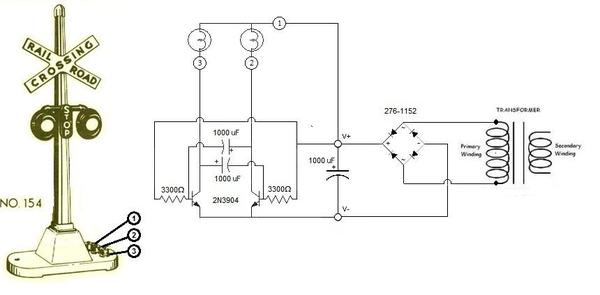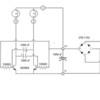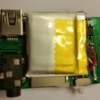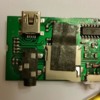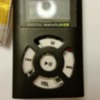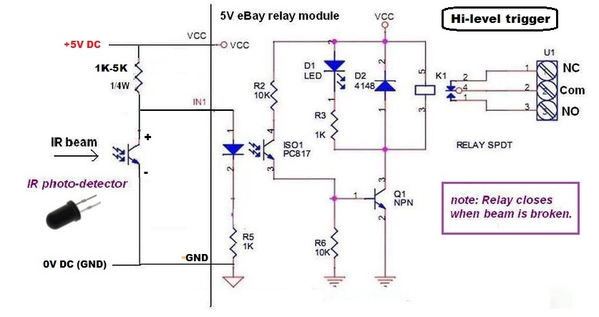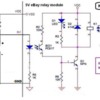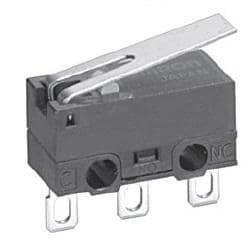Originally Posted by ken's trains:
Stan, I apologize. I went back to your old posts on the above topic. If I understand correctly, the circuit that will work with those flashers is the one that has the Oscillator module cycle the Relay module. I guess, using that circuit, I could skip the LED swap and just apply 12-16 VAC to the common terminal of the relay and power the incandescent lamps.
Am I correct in the above.
Hi Ken, you are correct in principle. That is, a relay could be used to switch AC back and forth between the two incandescent bulbs. The practical problem is an SPDT relay always has one or the other contact "on". So in the simplest implementation of the oscillator module driving a relay module, one crossing lamp would be solid ON when idle. Then when the oscillator module is activated only then the lamps would alternate flash. Clearly this is not what you'd want!
If you want to switch 12-16VAC to your crossing lamps I'd say the simplest solution is to add a second 99 cent relay module. This second relay module would turn on when the oscillator module turns on - and would apply your AC voltage to the 1st relay module's common. Hopefully this makes sense; if not I will sketch out a diagram for you.
As an aside, I was looking back in this thread and see a posting about using a relay module to drive DC voltage to alternating lamps. In this case (from March 17) the DC voltage was 5V but could be 12V if using a 12V relay module; the oscillator module should function just fine at 12V.
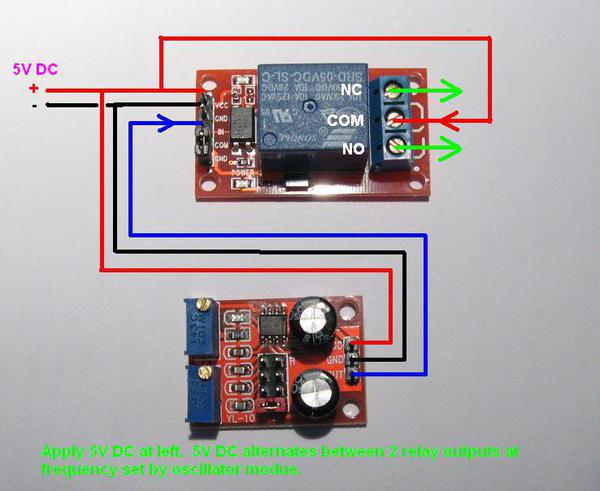
In this special case the same DC voltage which powers the oscillator module is switched thru the relay module. So if your lamps can be driven at 5V (or 12V) DC, then this configuration might apply. BUT note the surrounding thread discussions in that timeframe. In this particular case with your crossing gate frame tied to AC common, this assumes the "-" side of the DC circuitry is the same. As discussed in the thread this may or may not be the case depending on where your regulated DC voltage comes from. If you want to pursue this approach - or just want to hash it out - we can do that too.






